FTC Targets Disclosure of Health Data to Advertisers
By Iliana Peters, J.D. Colin Black, J.D. Polsinelli,


In a recent proposed order, the Federal Trade Commission (“FTC”) limits the ability of an online mental health services provider from sharing individuals’ health data, including information about mental health, for marketing and advertising purposes.
In addition to requiring the provider to pay $7.8 million, the FTC alleges that the provider shared information with a number of third-party companies for marketing and advertising, including Meta’s Facebook, Snapchat, Pinterest, and Criteo. In its complaint, the FTC cited the sharing of information without consent from the individual subject of the information through manual and automated means, which included individuals’ email addresses, IP address, and other persistent identifiers.
The FTC also placed specific emphasis on the use of web beacons, which presumptively refers in part to the Meta Pixel, a tracking technology provided by Meta that permits the collection of “events” that occur on a web page. These events can include one of over fifteen “universal” events, but can also be customized to track custom events and activities.
The initial complaint cited eight counts, including unfair privacy practices, disclosure of health information for advertising and third parties’ own uses, the failure to disclose

the use of health information for advertising, and misrepresenting the privacy of information shared with the provider. However, in all cases, the causes of action include the failure to secure adequate consent before sharing information, failing to provide limitations on the use of the disclosed
information, including individually identifiable health information, through the use of marketing and tracking technologies.

information, and misrepresenting in its online privacy policies how the provider would use and share sensitive information.
With this proposed settlement with the provider, the FTC indicates a pattern of heightened attention from federal government agencies with jurisdiction to the disclosure of sensitive
For example, in December 2022, the agency primarily tasked with HIPAA enforcement, Department of Health and Human Services, Office for Civil Rights (“HHS OCR”), published guidance for HIPAA covered entities and their business associates that prohibited regulated entities from using tracking technologies in a manner that would permit an impermissible disclosure of HIPAA protected health information (“PHI”) to tracking technology vendors or any other violations of the HIPAA rules. In that guidance, HHS OCR expressly provided that entities and activities outside the scope of HIPAA may still be subject to regulatory oversight and intervention by the FTC and other regulators where sensitive information is shared beyond the scope of authorization. Finally, we understand that the State Attorneys General continue to exercise their jurisdiction in these matters, as well.

PRSRT STD US POSTAGE PAID PERMIT NO 1 HOUSTON TX PERMIT # 1149 AUSTIN TX April Edition 2023 Volume 6 | Issue 4 Match Day Dell Med Graduating Students 2023 See pg. 10 Inside This Issue St David’s First Living Kidney Donor the New Online Registry See pg. 12 INDEX Mental Health pg.3 Oncology Research ........ pg.4 Healthy Heart pg.6 Hospital News pg.8 see Health Data
...page 14
... FTC alleges that the provider shared information with a number of third-party companies for marketing and advertising, including Meta’s Facebook, Snapchat, Pinterest, and Criteo.
PC
Equals make THE BEST PARTNERS.
Austin Medical Times Page 2 April 2023 austinmedtimes.com
We’re taking the mal out of malpractice insurance. As a company founded and led by doctors, we know what keeps you up at night. It’s why we partner with practices of all sizes to help manage the complexities of today’s healthcare environment and reward the practice of good medicine. Because when you have a partner who’s also a peer, you have malpractice insurance without the mal. Join us at thedoctors.com 7588_TX_HoustonMedTimes_BP_Oct2020_0920_v1.indd 1 9/17/20 1:45 PM
Mental Health
Two World-Renowned Health Care Organizations Join Forces to Address Teen Mental Health Crisis

Texas Children’s Hospital and The Menninger Clinic have joined forces to address the mental health epidemic adolescents are facing in the wake of the COVID-19 pandemic, and crisis warnings sounded by the U.S. Surgeon General. The new affiliation will expand access to in-patient care for patients ages 12 to 17 experiencing a behavioral health crisis in Houston.
While pediatric emotional and behavioral health challenges were a growing concern before the pandemic, the impact of COVID-19 on the mental health of children and adolescents and the effects of growing social media use have become a public health crisis. Instances of children and adolescents presenting to Texas Children’s Hospital Emergency Centers with critical behavioral health needs rose nearly 800% from 2019
through 2022. Reported behaviors included aggressive episodes, severe anxiety and depression, suicidal thoughts and suicide attempts.
The Menninger Clinic, one of the nation’s top-ranked psychiatric hospitals, will collaborate with Texas Children’s Hospital, one of the nation’s top-ranked pediatric hospitals, the top-ranked pediatric hospital in the state of Texas and the largest pediatric hospital in the United States, to support additional pediatric patients needing the safety of inpatient hospital care as well as transitional out-patient treatment to support returning home and to school. Inpatient care at Menninger will be provided jointly by a care team of Texas Children’s Hospital providers, including Baylor College of Medicine psychiatry faculty, alongside The Menninger Clinic’s clinicians and nursing staff. The
hospital program opens March 1.


Beginning March 15, Menninger will be accepting Aetna members for inpatient stabilization and the transitional day and intensive outpatient programs, and is actively seeking to accept additional insurers in the near future.
“This affiliation between Texas Children’s Hospital and The Menninger Clinic will have a life-changing impact for young patients in our community in need of critical behavioral health services,” said Texas Children’s Hospital President and CEO Mark A. Wallace. “In addition to the challenges we have faced over the past several years, these two teams
came together to find an appropriate plan of care for this growing demand for services. I am profoundly grateful for the commitment and agility of this partnership to help Texas Children’s Hospital do the right thing for our patients and our community.”
“Addressing the mental health crisis faced by our youth will take all of us coming together to look at how we can best connect those in need of behavioral health support with services in the moment they are needed most,” said Armando E. Colombo, president and CEO,
see Mental Health...page 14
Austin Medical Times Page 3 April 2023 austinmedtimes.com Medical Check In Improving customer service with technology As low as $34 / month 800-971-8871 www.medicalcheckin.com Fast Patient Sign In Process Organizes Patients by Reason HIPAA Compliant TX-RAMP Certified Unlimited Data Unlimited Support
Oncology Research
More Than Pen to Paper: The Value of Journaling for Cancer Patients
 By Ashleigh Porter, M.D., Texas Oncology–Cedar Park and Leander
By Ashleigh Porter, M.D., Texas Oncology–Cedar Park and Leander

Keeping a journal is a way to capture, share, and pour out thoughts, feelings, happenings, and milestones. It is indeed a form of self-care, enabling cancer patients to find meaning and perspective in the lessons learned as they navigate the unknowns of their disease.
Cancer.
This six-letter word can elicit a whole host of emotions. Fear. Sadness. Anger. Anxiety. Grief. But when and how can one process the emotional stress?
Patients find themselves trying to cope with the diagnosis, while simultaneously rebuilding their schedules to accommodate countless doctor appointments, treatments, scans, and side effects. They also need to communicate what is happening to loved ones who care and want to help. It is complicated. It is a lot. And that is where journaling can help.
Journaling and self-care
Journaling can provide an outlet for patients to:
• Express difficult or uncomfortable feelings and emotions
• Clarify goals as they navigate treatment
• Figure out how to share their experiences with others
• Better cope with their illness
• Find strengths they may not have fully known and discover qualities that may have been forgotten
Health benefits of journaling
Studies have shown that journaling has been proven to help manage stress and also can be associated with a decrease in
Postdoctoral Certificate in
symptoms of depression and anxiety, which are common among cancer patients. Research further shows that the act of expressive writing can improve one’s physical well-being.
In a study among women with breast cancer who journaled their feelings and thoughts during treatment, they reported decreased physical symptoms and had fewer unscheduled physician visits. Another trial that focused on expressive writing among patients with kidney cancer also showed similar benefits in the decrease of symptoms and an improvement of physical functionality. Types of cancer journals
Journaling is more than just
putting pen to paper. Documenting one’s journey through social media, online blogs, podcasts, video blogging (also known as vlogging), or online communities that allow patients to provide updates to loved ones such as Careopolis, is becoming more prominent. What each patient puts in their journal is a personal thing, and there is no right or wrong way.
Some patients decide to journal in order to keep detailed records during treatment or use it as an outlet to update family and friends versus talking on numerous daily phone calls. Others may journal to share
see Oncology Research...page 13
Infant & Early Childhood Development
The online and hybrid PhD and Master’s programs in Infant and Early Childhood Development (IECD) with emphases in mental health and developmental disorders is a multidisciplinary degree that includes mental health, education, occupational therapy, physical therapy, speech and language development, and the neurosciences.
For 45 years, Fielding has been educating scholars and leaders in pursuit of a more just and sustainable world.

Austin Medical Times Page 4 April 2023 austinmedtimes.com
Fielding.edu/IECD Online & Hybrid PHD and
MASTER’S DEGREES
Texas A&M Health Prepares Next Generation of Emergency Medical Responders
More Than 700 Health Profession Students Participated in The 15th Annual Disaster Day Simulation
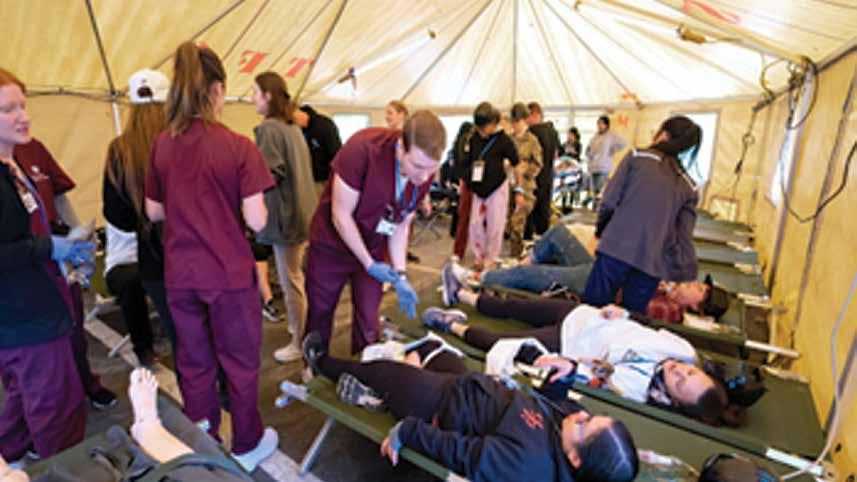 By Dee Dee Grays
By Dee Dee Grays
Asthe world has seen an increase in mass disasters—from the earthquakes in Turkey and Syria to man-made disasters such as the train derailment and chemical spill in Ohio— having health care professionals trained to respond to these emergencies has become even more critical. For 15 years, the Texas A&M University Health Science Center (Texas A&M Health) has been at the forefront of this training with its annual Disaster Day simulation. On Friday, March 3, the student-led event welcomed more than 700 Texas A&M students, over 85 faculty and
staff, and countless emergency response professionals to participate in the day-long disaster simulation.
Started by the Texas A&M School of Nursing in 2008, the event has grown from a small group at a local church to nearly 1,000 people orchestrating and taking part in the mass simulation. Today, the event is held at Texas A&M Engineering Extension Service’s (TEEX) Disaster City®. Students from Texas A&M schools of dentistry, medicine, nursing, pharmacy and public health, as well as athletic training, psychology and veterinary medicine students and the Corps of Cadets participated in this year’s drill.
“This year marks a milestone in the history of this event. As we celebrate 15 years, we have elevated our efforts to further enrich the student experience, which will ultimately serve patients across the state of Texas,” said Christine Kaunas, MPH, executive director for Interprofessional Education & Research at Texas A&M Health. “Not only are students practicing collaboratively to improve patient outcomes and learning critical disaster response skills, but they are doing so while faced with a high level of fidelity to a real event.”
As a student-led event, more than 50 students from Texas A&M work on
a planning committee—with guidance from a faculty and staff steering committee—doing everything from organizing student participation and training to creating the case scenarios for the drill.
Each year, a new scenario is selected and kept secret until the day of the event to provide the realism of an unexpected situation. This year’s simulated disaster was a hurricane, and students engaged in triage at the disaster site, patient care at the mock field hospital, mental health care and needs
see Texas A&M ...page 13
Our Digital Issue

Austin Medical Times Page 5 April 2023 austinmedtimes.com Now you can get the Austin Medical Times delivered straight to your inbox. Never miss an Issue of Austin’s Leading Local Healthcare News Online. Subscribe to
austinmedtimes.com
FEEL GOOD AGAIN
GIVE
centraltexasfoodbank.org
Presented by
Healthy Heart
Doing These 8 Things May Greatly Lower Risk for Heart Disease And Stroke
By The American Heart Association
People who strongly adhere to a set of eight lifestyle behaviors and heart-health metrics may have a lower risk for coronary heart disease and stroke than those who don’t, new research shows – especially women, younger adults and people with a lower genetic predisposition to heart disease.
The study also found that adhering to Life’s Essential 8 – key measures identified by the American Heart Association to improve and maintain good cardiovascular health –was better at predicting cardiovascular risks than Life’s Simple 7, an earlier set of heart-health metrics that did not include sleep.

The findings, presented at the AHA’s Epidemiology and Prevention, Lifestyle and Cardiometabolic Health conference in Boston, are considered preliminary until full results are published in a peer-reviewed journal.
The AHA created Life’s Simple
component was updated to focus on non-HDL cholesterol rather than total cholesterol.
But the biggest change was the addition of sleep duration, after a growing body of research found adults who get seven to nine hours of sleep each night were better able to manage cardiovascular factors such as weight, blood pressure and risk for Type 2 diabetes.
In the new analysis, researchers used data from the UK Biobank to score 137,794 adults who were free of cardiovascular disease on how well they adhered to Life’s Essential 8. Using a 100-point scale, scores were grouped into low, moderate or high adherence. Genetic risk scores for coronary heart disease and stroke also were calculated. Participants were almost evenly split between men and women and were an average 55 years old.
After a median 10 years of follow-up, those with high adherence scores had a 66% lower risk for coronary
7 in 2010 as a way to encourage what research showed had the greatest positive impact on cardiovascular health. These included not smoking, being physically active, eating a healthy diet, maintaining a healthy weight and managing blood glucose, cholesterol and blood pressure levels.

The metrics were updated last year to clarify several components and add one more. Cigarette smoking was replaced with nicotine exposure, to also include e-cigarettes and exposure to secondhand smoke. A guide to assess diet quality was added, outlining the elements of two eating patterns (the DASH and Mediterranean diets) shown to promote good cardiovascular health. And the cholesterol
heart disease, 55% lower risk for stroke and 64% lower risk for cardiovascular disease than those with low adherence. Using the Life’s Essential 8 model, compared to the previous checklist, better predicted who would develop cardiovascular conditions.
The analysis also showed women received a greater benefit from following the eight metrics than men. As adherence scores rose, the risk for coronary heart disease and cardiovascular disease fell more for women than it did for men. Likewise, the protective association between adherence scores and cardiovascular risks was stronger for people 55 and younger than it was for older adults.
see Healthy Heart ...page 13
Austin Medical Times Page 6 April 2023 austinmedtimes.com
We’re all ready to feel good again, but for our food insecure neighbors there’s no vaccine to fight hunger.
The 1 in 5 Central Texas children at risk of hunger deserve a shot at a happy summer.

Austin Medical Times Page 7 April 2023 austinmedtimes.com Driving business, practicing law. wallerlaw.com We have healthcare law DOWN to a SCIENCE 100 Congress Avenue, Suite 1800, Austin, TX 78701 Fletcher Brown: 512-685-6400
Hospital News
Intervention With Veterans in Health Care Settings Linked to Reductions in Intimate Partner Violence
Ahospital-based and traumainformed group intervention known as Strength at Home is associated with reductions in intimate partner violence – a serious and prevalent public health issue –according to new research published in JAMA Network Open.

In the study from scientists at Dell Medical School at The
University of Texas at Austin, the research team evaluated 1,754 patient records submitted from 73 Department of Veterans Affairs (VA) health care facilities from across the country during a six-year period to understand the effectiveness of the 12-week program. The study showed Strength at Home is associated with:
• A 17% decrease in the use
of physical aggression in relationships.
• A 23% decrease in psychological intimate partner violence.
• An 18% decrease in coercive control behaviors.
Symptoms of post-traumatic stress disorder (PTSD) and alcohol misuse, both linked to greater intimate partner violence, also declined with exposure to the group intervention.
Intimate partner violence is abuse or aggression occurring in a romantic relationship among current or former spouses and dating partners. It can include physical or sexual violence, stalking or psychological aggression. In the U.S., about one-third of adults experience sexual coercion, physical violence or stalking in their lifetimes, and almost half of men and women encounter forms of psychological aggression. Intimate partner violence can have a significant
Patients Prefer Immediate Access to Medical Test Results Online, Even If It’s Bad News
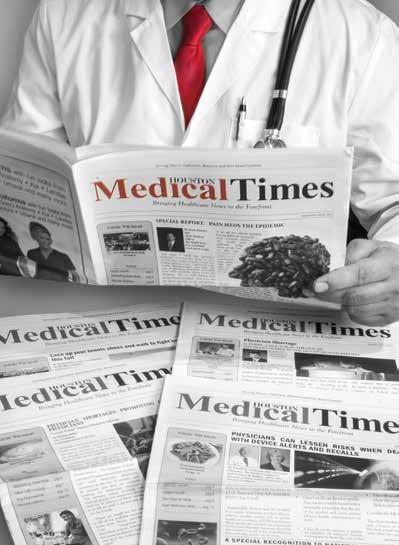
Patients overwhelmingly prefer to receive test results as soon as they are available on online medical portals, even if it means viewing the results prior to discussing them with their doctor, a new study co-led by researchers at UT Southwestern and Vanderbilt University medical centers reports.
The findings, published in JAMA Network Open, provide insights from patient perspectives and attitudes since implementation of the final rules related to information blocking in the 21st Century Cures Act, which requires medical test results to be released to patients as soon as they are ready.
“As care continues to become decentralized and dependent on digital solutions, our understanding of patient preferences related to the use of such technologies will be central to developing workflows that support a positive experience
for both patients and clinical teams,” said Robert W. Turer, M.D., Assistant Professor of Emergency Medicine at UT Southwestern, who co-led the study with Bryan D. Steitz, Ph.D., of Vanderbilt University Medical Center.
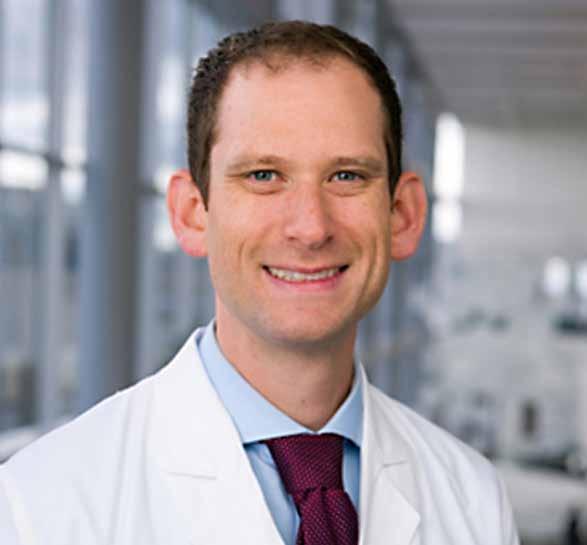
Before the rules went into effect in 2021, individual health systems could choose what to share with patients through online portals. Many health systems posted lab and imaging results, and some also offered clinical notes. However, a significant number withheld the release of certain results to give providers time to review and discuss them with patients. This was particularly common for results that could be misinterpreted or cause emotional distress, such as testing for human immunodeficiency virus, Huntington’s disease, or cancer.
A previous study showed that after the law went into effect, there was a fourfold jump in the number of results reviewed by patients before clinical counseling. But patients’ feelings about
this new access were unclear, said Dr. Turer, a member of UTSW’s Clinical Informatics Center.
To help answer this question, he and his colleagues sent more than 43,000 surveys to patients who had accessed results online between April 2021 and April 2022 at four large academic medical centers: UT Southwestern, Vanderbilt, University of Colorado Anschutz Medical Campus, and University of California, Davis Health. The 29-question survey examined patient demographics as well as test result information, the reviewer’s behaviors, education and provider follow-up, effects on health and well-being, and preferences for future results.
Researchers found that nearly 96% of the 8,139 survey respondents preferred immediate access to their test results. These included 95% of patients with abnormal test results. About 90% of patients said they preferred to receive
impact on physical or mental health and present social, educational and workplace challenges.
Health Care-Based Model Avoids
Stigma, Recognizes Role of Trauma
“This is the first effort on a national scale to integrate intimate partner violence into a health care system like the VA,” said study author Suzannah Creech, Ph.D., associate professor in the Department of
future test results directly through the portal, even if their provider had not yet viewed a result.
Although almost half of respondents who viewed a result before being contacted by a provider reported feeling less worried, 7.5% reported being more worried. Respondents who viewed abnormal results were more than three times as likely to report being “more worried” or “much more worried” compared with those who viewed normal results.
Austin Medical Times Page 8 April 2023 austinmedtimes.com
see Intervention ...page 13
Robert W. Turer, M.D., is Assistant Professor of Emergency Medicine at UT Southwestern.



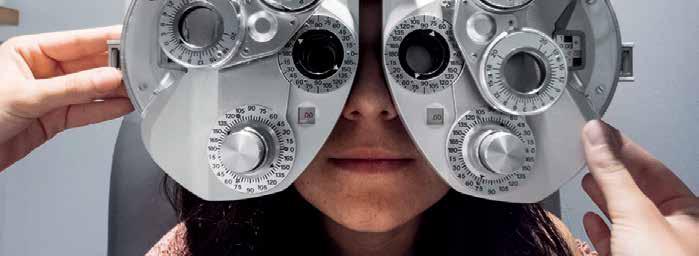

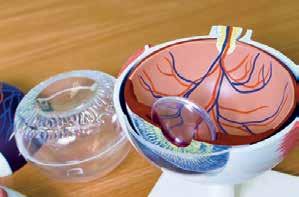


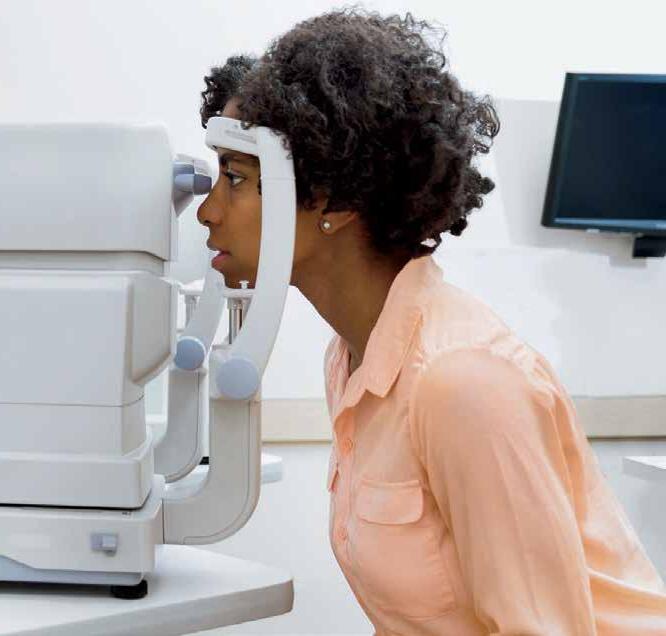




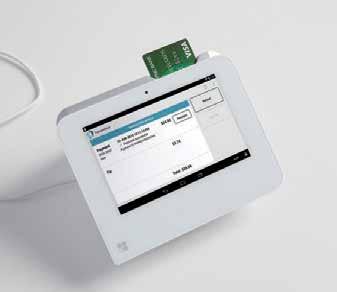








Austin Medical Times Page 9 April 2023 austinmedtimes.com
Match Day: Nearly Half of Dell Med Graduating Students to Stay in Texas for Residency Training, 170+ New Physicians Inbound to Austin

Every year around this time, Dell Medical School at The University of Texas at Austin talks about Match Day. graduating medical students across the U.S. learned where they are headed for their residency training later this year.


The 43 students graduating from Dell Med in May who are entering residency programs will be spread across 13 states. About 45% of them will stay in Texas for residency — important because nationally, 57% of physicians who complete residency training practice in the state of their training. At Dell Med, that average is more than 70%.
One in four graduating Dell Med students will join programs right here in Austin.
The school also learned that it will welcome more than 120 new physicians to residencies at Dell Med, where they will train in an area of specialty while providing a combined 730,000-plus hours of care each year at more than 80 local hospitals and clinics in Central Texas.
Starting this summer, Dell Med will be home to more than 430 physicians-in-training – residents and fellows – working in 47 specialties.
Dell Medical School resident and fellow training programs are co-sponsored with Ascension Seton. Together, they have more than tripled the number of specialty training programs since 2014, and are on track to have 466 residents and fellows providing care in Austin by 2026.
Austin Medical Times Page 10
cookiedelivery.com cookie delivery cookie delivery Warm cookies, delivered.
Joining medical students across the country, graduates from Dell Med’s Class of 2023 learned where they will attend residency training — a milestone in their medical careers.

Austin Medical Times Page 11 April 2023 austinmedtimes.com
St. David’s North Austin Medical Center Receives First Living Kidney Donor Through New Online Registry
WhenCamden Underwood was renewing his car registration online, he signed up to be a living kidney donor through a new registry. He had no idea he would be making history as the first in the country to use this registry and save a life.
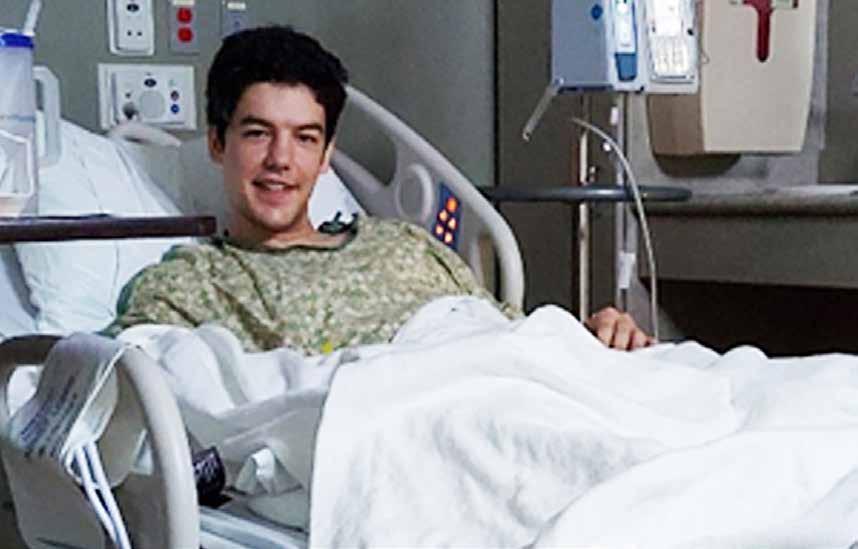
Donate Life America, a nonprofit organization dedicated to increasing organ donation, launched the National Donate Life Living Donor Registry in late 2021. It’s designed to lower barriers for organ donation by allowing individuals ages 18-65 who registered as a deceased donor to also register their
interest in becoming a living kidney donor.
Camden didn’t think much of it when he registered online. He just wanted to help his community. When asked to select a participating facility in Austin, he chose The Kidney Transplant Center at St. David’s North Austin Medical Center, and after submitting paperwork and going through eligibility testing, he was matched with someone who needed a kidney.
Of the eight people who expressed interest, Camden was the first from the registry to donate a kidney.
Age Well, Live Well April Brings Opportunities for Volunteers
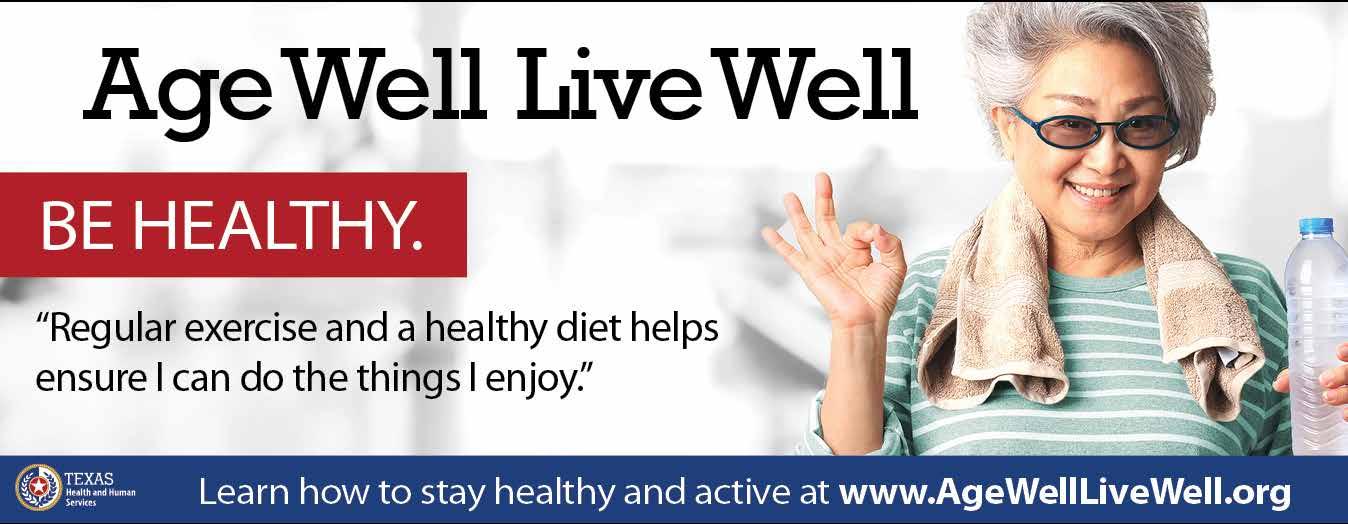
He underwent a successful surgery performed by Dr. Koushik Shaw on July 12, 2022, at St. David’s North Austin Medical Center. His kidney helped save
the life of one of the thousands of people awaiting an organ transplant. And it all started with the click of a button.
• How much time do you have to give? This will help you decide how often you can volunteer.
PainAs
April’s sun warms us up, it inspires us to put away winter gear, start spring cleaning and seek new opportunities. April is Global Volunteer Month and National Volunteer Week is April 16–22, which gives us a chance to recognize the important role volunteers hold in our communities.
According to AmeriCorps, 4.8 million Texans volunteered through a community based organization and 10.4 million Texans volunteered informally by helping out their neighbors in 2021. April is a great time to join millions of Texans and start volunteering.
Volunteering helps the community, residents and the volunteer. An AmeriCorps research review
found that volunteering is shown to lead to better health overall. Along with the satisfaction you get from helping others and your community, there are many reasons to volunteer, including community organizations need volunteers. Consider reaching out to a community organization that is meaningful to you and asking if they need any volunteers.
If you are interested in volunteering but are not sure how to get started, consider these questions:
• What are your hobbies, interests and special skills? Identifying what you are interested in can help you figure out what organization or population you would like to volunteer with.
• Are you looking to volunteer in person or virtually? Many organizations offer virtual volunteer opportunities.
• What organizations in your community are looking for volunteers? Volunteer search engines, like Volunteer Match or Points of Light, can help you find volunteer opportunities near you.
• Are there any barriers for you to get involved? If it is time, consider a one-time volunteer opportunity, or if transportation is a barrier, explore virtual volunteering.
For those looking for an informal volunteer experience, the Texas Health and Human Services Know Your Neighbor Campaign may be a good fit.
The Know Your Neighbor Campaign urges Texans to form and maintain new connections with older neighbors to help reduce the risks of isolation and loneliness.
Know Your Neighbor provides resources to make forming those connections easier. Learn more about Know Your Neighbor on the Be Connected webpage. Explore the volunteering resources on the Aging Well Resources Order form. Enter some basic facts about yourself and then select Volunteerism under the category menu. Embrace spring by connecting with others, improving your health and giving back to your community by volunteering.
Written by: Catalina Popescu, HHS ASC VISTA and Claire Irwin, HHS Age Well Live Well Coordinator
Austin Medical Times Page 12 April 2023 austinmedtimes.com
Joining medical students across the country, graduates from Dell Med’s Class of 2023 learned where they will attend residency training — a milestone in their medical careers.
Oncology Research
Continued from page 4
tips or advice with fellow cancer patients on what they have personally experienced and might expect.
Many patients choose to journal as a way of leaving a legacy of their
Texas A&M
Continued from page 5
assessment at an evacuation shelter, and disaster management and simulation oversight at Disaster City’s Emergency Operations Training Center.
During the simulation, students take on the role of patients or providers. Students who participate as patients receive makeup, known as moulage, to mimic injuries based on the current scenario. As the drill begins, patients act out the case that they are assigned, while students acting as physicians and nurses do field assessments, then transfer patients to a field hospital for more
Healthy Heart
Continued from page 6
The relationship between adherence and coronary heart disease
Intervention
Continued from page 8
Psychiatry & Behavioral Sciences Dell Med.
The Strength at Home intervention was originally adopted by the VA in 2013 as part of its Intimate Partner Violence Assistance Program. Previous randomized clinical trials have shown that Strength at Home is linked to decreases in all types of aggression when compared with control groups, but those studies were not performed within such a broad health care system with numerous providers as with the VA, said Creech.
The intervention teaches participants about aggression in relationships, how to communicate feelings, how to slow down and analyze
cancer journey for family and friends to read later. This form of journaling can help family members as they grieve by having an outlet to read their late loved one’s memories, words of wisdom, or even favorite recipes. In turn, this allows the patient to feel a sense of contentment in the knowledge they are leaving a little piece of themselves behind.
Three tips on starting a cancer journal
diagnosis and treatment. Pharmacy students work with providers to determine the medications needed, and psychology students provide the mental health care required of disaster victims. Athletic training and dentistry students provide specialized care in orthopedic and soft tissue trauma, and head and neck injuries, respectively. Public health students manage the disaster to deploy resources and address outbreaks that occur during disasters.
“Many planning hours are spent by the student planning committee and our faculty and staff steering committee to create Disaster Day. It is so satisfying when all the months of planning come to fruition. We hope students walk away
1. Start simple. Choose a format that best suits you, whether it is pen and paper or through an electronic outlet.
2. Find your place. Determine a location or space where you feel comfortable to write and will not be interrupted.
3. Set a routine. Some may find writing in the morning helps start the day, while others choose to journal to unwind before bedtime.
with critical training and skills they will remember the rest of their careers,” stated Justin Dugie, student planning director for Disaster Day.
As the event has grown, so has collaboration with corporations and government agencies, such as H-E-B and the Texas Department of Emergency Management. This year, Texas A&M Health collaborated with St. Joseph Health and the United States Military to enhance the simulation. The United States Air Force 59th Air Medical Wing and Texas Air National Guard 136th Airlift Wing provided medical evacuations by airplane, while St. Joseph Health Air Med 12 facilitated airlifts via a helicopter. Students got a first-person
During some time periods, patients may not have the energy to write more than a sentence or two – and that is okay. A patient’s cancer journal is their own and it is fine to take a break and start again later. The simple act of putting pen to paper – or fingers to keyboard – to express yourself can be an important and helpful tool in navigating all the twists and turns of the cancer journey.
perspective on air evacuations, making the simulation more realistic.
“As we continue to grow events like Disaster Day, we understand the value of working with System and government partners, organizations and companies that can bring real world experiences to our students,” states Jon Mogford, PhD, chief executive officer and senior vice president of Texas A&M Health. “These partnerships not only help enhance and expand our students learning experience, but also help us develop relationships and opportunities for future projects and partnerships.”
risk was stronger among people with a low genetic disposition for the condition. Those with low genetic risk and high adherence to the metrics were 78% less likely to develop coronary
the thought processes leading to violence, and how to practice these newfound skills in the real world.
“The more we can address the influence of all types of violence on human health within the framework of a health care setting – rather than within the criminal justice system or by expecting people to resolve these behaviors on their own – the more we can destigmatize these issues and offer resources when patients come into the doctor’s office for a primary care visit instead,” said Creech, who references similar programs using punitive measures within the criminal justice system as expensive and not very effective.
Decreasing stigma is one of the key features attributed to the success of Strength at Home. “The intervention comes from a nonjudgmental place,” said Creech. “When you create an
heart disease over a decade of follow-up compared to people with high genetic risk and low adherence.
Likewise, those with a low genetic risk for stroke and high adherence to
open, accepting environment where you can talk about what’s happened while also holding yourself and others accountable, it helps promote change and accountability.”
The trauma-informed approach of the Strength at Home program is another key characteristic of the model. Trauma-informed practices seek to foster an understanding of the ways in which trauma and adversity can shape behavior. Trauma-informed care also asks providers and systems to increase their sensitivity to patient reactions to health care practice and environments that may be shaped by their prior experiences of trauma and adversity.
Creech underscores that the involvement of participants from within the VA system does not imply that military veterans tend to be more violent than the general population.
metrics were 64% less likely to have a stroke than those with a high genetic risk and low adherence scores.
“Actually, rates of intimate partner violence are high nationally, regardless of the setting. The VA decided to address intimate partner violence because it started to measure it, not because military veterans are more violent than others,” said Creech.
The study was part of a collaborative effort with colleagues from the VA National Center for PTSD and VA Central Office, and funding for the study was provided by the Bob Woodruff Foundation, the Blue Shield Foundation of California, the VA and the National Center for PTSD.
Austin Medical Times Page 13 April 2023 austinmedtimes.com
Health Data
Continued from page 1
Accordingly, while the FTC’s proposed settlement in this instance applies immediately only to the provider, businesses of all sizes would be well-served to view this proposed settlement as part of a larger strategic effort by both state and federal regulators to crack down on the unauthorized sharing of information. The risk is clearly amplified where an entity is engaged in the provision of goods and services involving potentially sensitive information, such as healthcare or financial services.
While this provider’s practices may have been deficient, they are hardly uncommon. Users are seldom truly anonymous online, and can be tracked through myriad technologies, including cookies, web beacons, session replay, IP address, device fingerprinting,
Mental Health
Continued from page 3
The Menninger Clinic. “This affiliation with Texas Children’s Hospital, which combines key strengths from each institution, is the kind of collaboration we need right now to help more adolescents and families in crisis in the Greater Houston community.” The collaboration initially will focus on safe stabilization of adolescents suffering with depression, anxiety and suicidality. For those adolescents and families needing additional treatment and support, Menninger offers an intensive outpatient program, an adolescent day treatment program as well as adolescent group and family therapy.
Both Texas Medical Center institutions are world-renowned for their quality of care. For over three decades, U.S. News & World Report has continuously ranked The Menninger Clinic as a top psychiatric hospital on its annual Best Hospitals list. Texas Children’s Hospital has been recognized as one of the best children’s hospitals in the nation and the top pediatric hospital in Texas for over 13 years.
Due to the drastic increase in the number of patients presenting with behavioral health concerns, Texas Children’s Hospital created an internal Behavioral Health Task Force comprised of clinical and

and more. Organizations should carefully consider whether their existing privacy policies, information sharing procedures, and third-party support are compatible with the tracking technologies that users may encounter online. This should include an analysis of tracking technologies that are utilized on their own websites on page-by-page basis, as well as how integrated third parties may attempt to leverage or collect that data for their own uses. Based on this analysis, organizations should tailor their disclosures and requests for consent accordingly, taking into consideration:
(1) the potential sensitivity of the information to be collected, (2) the user’s constructive awareness that the information is being collected,
(3) whether this information is being
shared with or collected by third parties, (4) whether a user consented to, or is at least reasonably on notice of the sharing, and (5) the potential for error or misuse associated with the collection of the data.
Finally, organizations should carefully review their existing agreements with third parties to confirm which data can be collected, whether data can be shared (and if so, the purpose for which the sharing can occur), and to ensure that their own privacy practices are consistent with representations made by the data owner organization.
operational leaders to determine what steps the hospital could take to meet the growing behavioral health needs of children who need care, both immediately and over the long term.
“The behavioral health needs of our children are at a critical point. We expect those needs to grow and evolve as the full effect of the pandemic is revealed, including longer-term mental health concerns, the impact of learning gaps that resulted from school closures, and grief and bereavement for families who lost loved ones,” said Dr. Kirti Saxena, Chief of Psychiatry at Texas Children’s Hospital and Associate Professor of Psychiatry and Behavioral Sciences in the Menninger Department of Psychiatry and Behavioral Sciences at Baylor College of Medicine. “This partnership with The Menninger Clinic will allow us to have an even greater impact on access to acute mental health care for children in our community.”
The adolescent stabilization service at Menninger will have 12 inpatient beds. Menninger’s transitional step-down services include an intensive out-patient program for the adolescent and their family and a forthcoming re-opening of an adolescent day
treatment program that will bridge the transition from the hospital, which is often a high-risk period following a mental health crisis.
“Many of our children and adolescents are in crisis. As clinicians, we recognize the critical role we all share in helping these young people find hope and healing,” said Cory Walker, DO, chief medical officer at The Menninger Clinic and assistant professor of psychiatry in the Menninger Department of Psychiatry and Behavioral Sciences at Baylor College of Medicine. “While mental health professionals have recognized for some time that adolescent mental health has needed a higher level of service than is broadly available, the pandemic has made this clear to the general public, as well as within other medical specialties. The youth mental health emergency has been the driving force between Texas Children’s Hospital and The Menninger Clinic collaborating to bring safe, effective mental health treatment to more adolescents and their families.”
Austin Medical Times Page 14 April 2023 austinmedtimes.com Published by Texas Healthcare Media Group Inc. Director of Media Sales Richard W DeLaRosa Senior Designer Jamie Farquhar-Rizzo Web Development Lorenzo Morales Distribution Brad Jander Accounting Liz Thachar Office: 512-203-3987 For Advertising advertising@ medicaltimesnews.com Editor editor@medicaltimesnews.com Austin Medical Times is Published by Texas Healthcare Media Group, Inc. All content in this publication is copyrighted by Texas Healthcare Media Group, and should not be reproduced in part or at whole without written consent from the Editor. Austin Medical Times reserves the right to edit all submissions and assumes no responsibility for solicited or unsolicited manuscripts. All submissions sent to Austin Medical Times are considered property and are to distribute for publication and copyright purposes. Austin Medical Times is published every month P.O. Box 57430 Webster, TX 77598-7430
KEEPING NEW MOMS AND MOMS-TO-BE SAFE AND HEALTHY
A healthy pregnancy is best for both mom and baby. Pregnancy and childbirth can put a woman’s health at risk, but many pregnancy-associated deaths can be avoided.
BEFORE GETTING PREGNANT
It’s important to understand your medical risks and to get as healthy as possible before pregnancy. Talk to your health care team about:
• Whether you have any signs of heart disease
• Your family health history
DURING PREGNANCY
• Visit a health care provider regularly
• Take medication as prescribed
IN AND AROUND DELIVERY
• Watch for changes and take action
• If you have concerns about your health or the health of your baby, consult your health care provider
AFTER DELIVERY
• Make your health a priority
• Get continued medical care
• Inform new health care
• Your blood pressure
• Whether you should lose or gain weight, and if so, how Getting 150 minutes of physical activity per week
• Healthy eating
• Sodium in your diet
• Whether prenatal vitamins
• Reduce stress and manage anxiety
• Monitor weight gain
• Avoid unhealthy habits such as smoking, alcohol and
immediately
• Some complications show up days after delivery
• Heart Rate and blood pressure normally decrease within 48 hours postpartum
• Blood pressure may increase
providers about the pregnancy
• Monitor your mental health
• Find ways to be active
are recommended
• Quitting any unhealthy substances, such as tobacco, alcohol, and
• marijuana or other drugs
• Safety in your home environment
illegal drugs
• Follow extra precautions if you’re older than 35
again 3-6 days later due to fluid shifts.
• During this period, you should be monitored for complications.
• Find time to sleep
• Eat nutritious food
• Rely on a support network







LEARN THE WARNING SIGNS
It’s important for you to stay on top of your own health. Many heart-related problems can happen in the days and weeks after delivery — even up to a year later. Some symptoms, such as fatigue and mild pain, are expected after childbirth. But strange or sudden changes may be a sign of stroke, heart problems or other dangerous conditions. Seek medical care right away if you have any worrisome symptoms during or after pregnancy, including:
• Severe or worsening headache
• Blurred vision or other vision changes

• Feeling dizzy, faint or disoriented
• A fever over 100.4 F
• Extreme weakness or fatigue
• Vaginal bleeding or foul discharge
• Abdominal pain
• Chest pain or racing heart

• Rapid or labored breathing
• Severe nausea or vomiting
• Unusual swelling of hands or face
• Redness, pain or swelling in arms or legs
• A slowing or stopping of fetal movement
• Severe anxiety or depression


• Thoughts of harming yourself or your child
• General ill feeling
Austin Medical Times Page 15 April 2023 austinmedtimes.com
©2023 American Heart Association, Inc., a 501(c)(3) not-for-profit. All rights reserved. Go Red for Women is a registered trademark of AHA. The Red Dress Design is a trademark of U.S. DHHS. Unauthorized use prohibited.

Austin Medical Times austinmedtimes.com









 By Ashleigh Porter, M.D., Texas Oncology–Cedar Park and Leander
By Ashleigh Porter, M.D., Texas Oncology–Cedar Park and Leander


 By Dee Dee Grays
By Dee Dee Grays






































